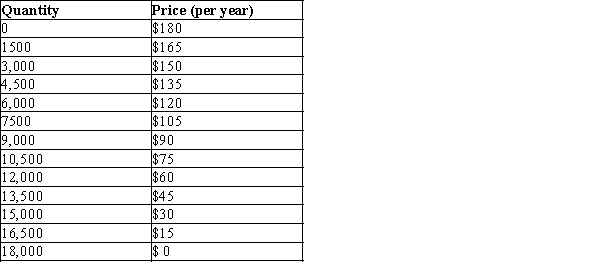Multiple Choice
Table 17-5
The information in the table below shows the total demand for premium-channel digital cable TV subscriptions in a small urban market. Assume that each digital cable TV operator pays a fixed cost of $200,000 (per year) to provide premium digital channels in the market area and that the marginal cost of providing the premium channel service to a household is zero. 
-Refer to Table 17-5. Assume that there are two profit-maximizing digital cable TV companies operating in this market. Further assume that they are not able to collude on the price and quantity of premium digital channel subscriptions to sell. How much profit will each firm earn when this market reaches a Nash equilibrium?
A) $25,000
B) $90,000
C) $160,000
D) $215,000
Correct Answer:

Verified
Correct Answer:
Verified
Q13: The problems faced by oligopolies with three
Q75: If duopolists colluded but then stopped colluding,<br>A)price
Q78: In a duopoly situation, the logic of
Q79: Table 17-21<br>The Chicken Game is named for
Q81: Table 17-1<br>Imagine a small town in which
Q82: If nations such as Germany, Japan, and
Q83: Assuming that oligopolists do not have the
Q85: The manufacturer of South Face sells jackets
Q111: Cartels with a small number of firms
Q188: Define collusion.